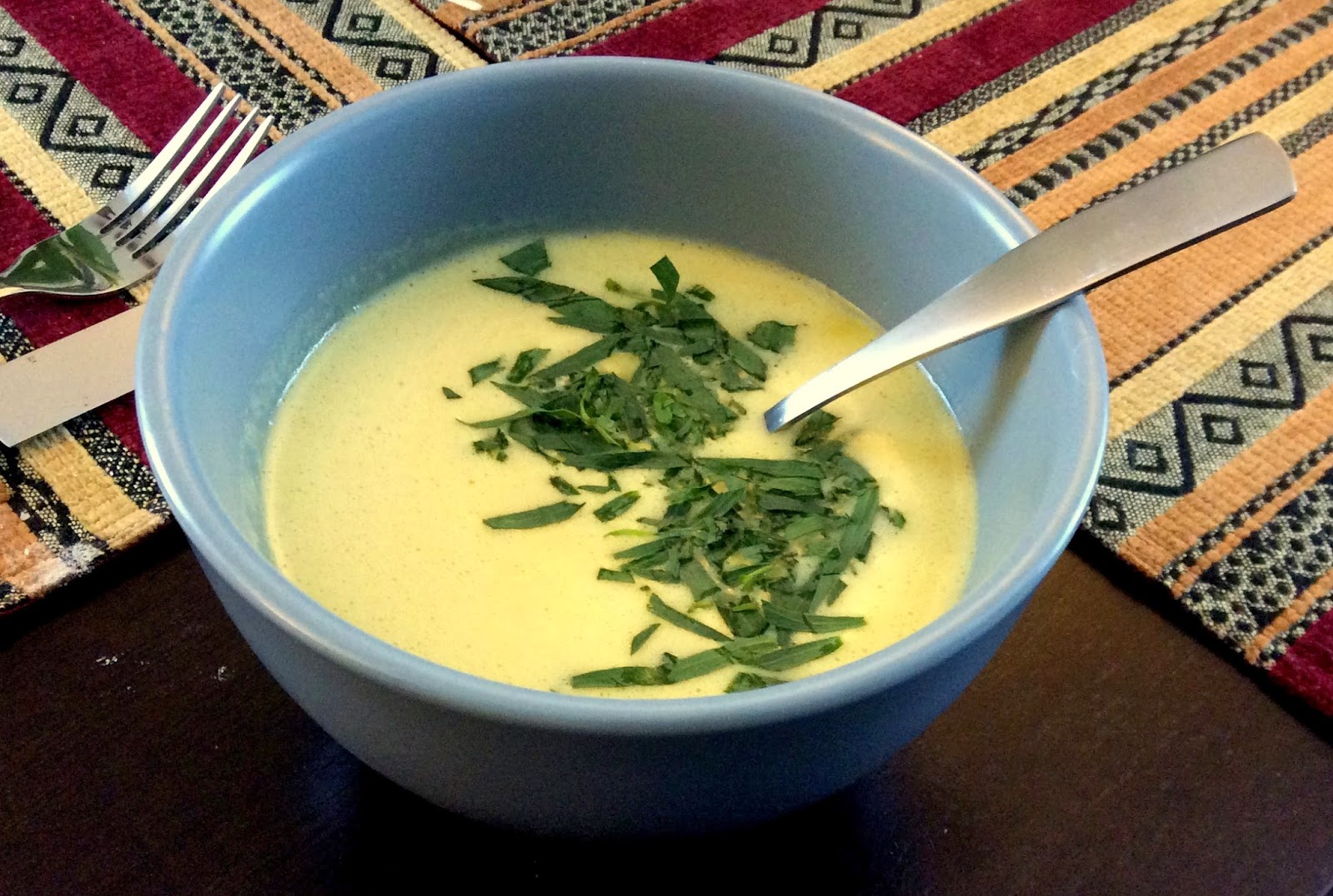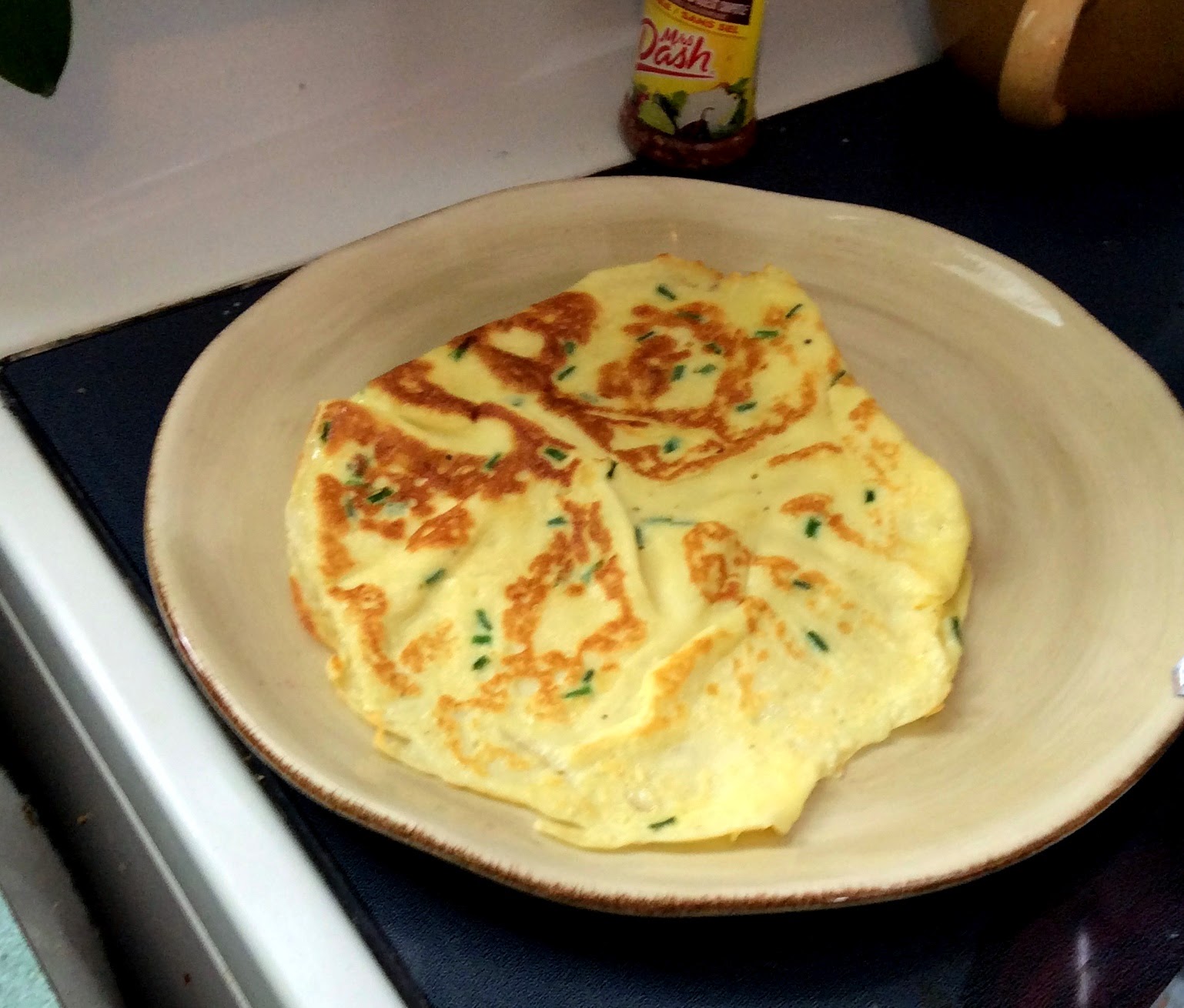Mmmm. Pastry. Mmmmm meat in pastry. There are about a thousand variations on it, but almost all of them (let's be honest, all of them) are absolutely delicious. And don't the British know it. This perhaps could be the most supremely British of all dishes, I mean it's named after a duke for goodness sake. Of course, the French, being French, insist on calling it simply by the descriptive name: beef en croute. And that, since we used a French cookbook to make it, is perhaps the best way to describe this epic dish.
This dish brings "multi-step cooking" to a whole new level. Not only do you have to make your own pastry. Not only do you have to make your own crepes to be a "buffer layer" within the pastry. Not only do you have to make the mushrooms and blanched spinach that goes within the pastry. But the cookbook insists on accompanying this fine meal with a lovely bearnaise sauce which, you guessed it, you also have to make yourself. All in all, this escapade probably took about 36-48 hours. So if you're looking for a dish to impress dinner guests with, this one will take the cake. But set aside your whole weekend, folks. You're gonna need time.
So let's get to it. For simplicity's sake, I've isolated the various components of the dish into the main wellington/beef en croute, so that you can follow the steps of assembly in order. Because, if you hadn't guessed already, there are many.
Serves: 6
For the wellington pastry (similar to a brioche dough but a little firmer and less rich)
Ingredients
260ml tepid milk
12g fresh yeast (8g active dry)
450g plain (all-purpose) flour
10g fine salt
3 egg yolks
90g butter, slightly softened
45g caster sugar
Method
Put the milk and yeast into a bowl and stir to dissolve the yeast. Put the flour, salt, and eggs in an elective mixer fitted with a dough hook and pour in the milk and yeast mixture. Mix on low speed to combine and knead the dough for 5 minutes.
Scrape down the sides of the bowl with a rubber spatula, then knead at medium speed for about 10 minutes. By this stage, the dough should be smooth, elastic, and well amalgamated.
Meanwhile, in another bowl, mix the butter and sugar together well. Add a few small pieces to the dough, then with the mixer running at a law speed, add the rest, a piece at a time. When the butter mixture is all incorporated, increase the speed and work for 6-10 minutes until the dough is very smooth and shiny, and comes away from the bowl with perfect elasticity.
Of course, if you're feeling particularly vigorous, you can always forgo the electric mixer and do the whole thing by hand. It will take a bit more time, but will yield the same result (and tone your arm muscles quite nicely).
Remove the dough hook, leaving the dough in the bowl. Cover with a tea towel or cling film and leave to rise at approximately 24 degrees C or 75 degrees F for about 2 hours until the dough has doubled in volume.
Knock the dough back by flipping it over 2 or 3 times with your hand. Cover the bowl again and refrigerate for several hours (but not more than 24 hours). The dough is then ready to use and mould.
Herb Crepes (to serve as a buffer between the main pastry and the beef)
Ingredients
60g plain flour
150ml milk
2 eggs
salt and freshly ground pepper
15g chopped or snipped fresh herbs (parsley, chervil, chives, etc.)
30g clarified butter (I explain below)
Method
In order to make the clarified butter: melt the butter very slowly/gently in a saucepan and then bring it to the boil. Ladle the clear butter through a muslin-lined sieve, leaving the milky deposit in the bottom of the pan.
Put the flour into a bowl and make a well. Add 1/3 of the milk (50ml), the eggs, a pinch of salt and a grinding of pepper. Mix lightly with a whisk to make a smooth batter, then pout in the rest of the milk and mix thoroughly. Pass the batter through a chinois (a fine mesh sieve). Cover with cling film and leave to rest for about 30 minutes. Stir the herbs into the batter just before cooking the crepes.
Lightly grease a large frying pan with a touch of clarified butter. Give the batter a stir, then ladle in just enough to cover the bast of the pan. Cook quickly for about 1 minutes, then turn the crepe over with a palette knife (or spatula) and cook for barely a minute. Repeat until you have used all the batter.
Stack the cooked crepes on a plate, layering a piece of greaseproof paper between each one to prevent them sticking together.
Wellington Filling and Main Recipe
Ingredients
1 fillet of beef (about 800g- 1kg)
salt and freshly ground pepper
80g clarified butter (see recipe for crepes on how to make clarified butter)
60g butter
500g button mushrooms, finely chopped
juice of 1 lemon
60g shallots, finely chopped
100ml, double cream
12 large spinach leaves
4 herb crepes (see recipe above)
eggwash (1 egg yolk mixed with 1 tbsp milk)
Method
For the beef filled, preheat the oven 200 degrees C or 400 degrees F. Trim the fillet of any membrane, then season all over with salt and pepper. Heat the clarified butter in a roasting pan over a medium high heat and sear the beef for 3-4 minutes until golden, turning to color evenly. Transfer to the oven and roast for 6 minutes, turning the meat over after 3 minutes. Lift the beef onto a wire rack and leave to cool completely. At this stage, it will be very rare.
For the mushroom duxelles, heat the 60g butter in a pan over a medium heat. Add the mushrooms and lemon juice and cook, stirring from time to time, until all the moisture has evaporated. Add the shallot and cook for another 2 minutes, then pour in the cream and cook, stirring until it is all absorbed. Season to taste and set aside to cool, then chill.
 Blanch the spinach leaves in boiling salted water for 30 seconds, then drain and refresh in cold water. Drain well, separate the leaves and pat each one dry with kitchen paper.
Blanch the spinach leaves in boiling salted water for 30 seconds, then drain and refresh in cold water. Drain well, separate the leaves and pat each one dry with kitchen paper.
To assemble, roll out the pastry on a lightly floured surface to a 40 x 25 cm rectangle, 3-4mm think. Trim the sides to neaten. Place 2 crepes along the middle of the rectangle and cover them with 8 spinach leaves. Spoon and spread a 1 cm thick band of mushroom duxelles along the middle of the spinach and crepes. Put the cold beef fillet on top and thickly cover the whole surface, including the ends, with the remaining duxelles.
 Cover the mushroom duxelles with the remaining spinach and crepes. Fold the crepes over the beef and if necessary cut off any remaining parts with scissors. Lightly brush the 2 ends of the pastry rectangle with eggwash. Fold one side over the beef, brush it and the ends with eggwash, then fold the other side over the beef.
Cover the mushroom duxelles with the remaining spinach and crepes. Fold the crepes over the beef and if necessary cut off any remaining parts with scissors. Lightly brush the 2 ends of the pastry rectangle with eggwash. Fold one side over the beef, brush it and the ends with eggwash, then fold the other side over the beef.
Roll out the 2 ends of the pastry to a 5-6 mm thickness, and trim to an 8cm length. Brush these with eggwash and fold them over the beef. Turn the pastry-wrapped beef over onto a baking sheet and refrigerate for 30 minutes. Meanwhile, heat the oven to 200 degrees C/400 degrees F.
Brush the entire surface of the pastry with eggwash and score it with leaf patterns using a knife tip. Cut a small aperture in the middle of the pastry to allow the steam to escape during cooking. Bake for 25 minutes if you like your beef rare or 35 minutes for medium. If the pastry becomes too brown as it cooks, cover loosely with foil and lower the oven temperature slightly.

Use a palette knife to transfer the cooked beef to a wire rack and leave it to rest for 5 minutes. Carve the beef in its crust into thick slices and serve on warm plates, with a generous spoonful of bearnaise sauce and roast potatoes.







